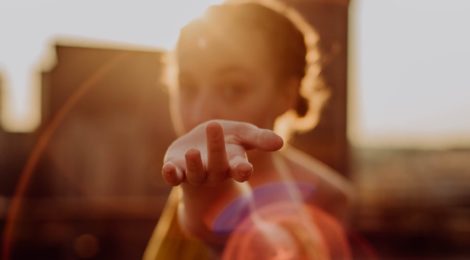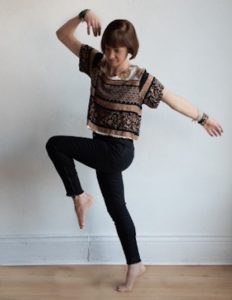
Restoring Well-Being with Ecstatic Dance
As one of the oldest forms of communication, dance has been used to convey a range of emotions, and is recognized as a part of human expression across cultures. I regularly use movement to cope with stress, so when I was introduced to ecstatic dance events, which are essentially small-scale sober raves, I was delighted.
Creative movement therapies can be useful in the treatment of depression and anxiety. Exercise alone improves mood and minimizes stress. With ancestral roots in bonding and communication, dance provides additional benefits. Ecstatic dance involves moving to music in a free manner in the absence of guidance. The ‘ecstatic’ aspect refers to spontaneous and unrestrained movement, without concern for the aesthetics of the dance. Research suggests that ecstatic dance helps freely express emotion.
In an interview with The Trauma and Mental Health Report, Tasha Bodnarchuk, a holistic counsellor, described how ecstatic dance has helped her:
“I feel that emotions can become stagnant in my body. This practice reminds me of the mind-body connection. I can truly allow whatever it is that I’m feeling to be expressed and released through movement.”

Holistic counsellor Tasha Bodnarchuk, used with permission.
The ecstatic dance movement has three foundational principles: First, dance barefoot if possible to connect more fully with the ground. Second, dance without words to promote a meditative state, as there is no verbal instruction from facilitators during the experience. Third, dance as you are, meaning without the use of drugs, alcohol, phones, cameras, and with no expectations or judgement.
The ecstatic dance experience often begins with a brief guided meditation, and the rhythmic sounds start off gentle and slow. Participants allow their bodily movements to flow with the music as it gradually increases in pace and intensifies. After a period of high energy dance, the music slows, and participants rest briefly before gathering in a circle.
Ecstatic dance appears to have some therapeutic qualities. A study at Dublin Business School of Arts in Ireland explored the restorative effects of ecstatic dance and found that participants benefitted from it both as a form of communication and as a coping strategy. Ecstatic dance was also seen to be valuable in terms of connection, not only with others, but also by giving dancers space to connect with their own emotions.
Bodnarchuk explains:
“Tension, stress and trauma are all stored in the body, so through ecstatic dance I can release this weight I’ve been carrying. When I left my partner of 12 years, I let all those feelings out with ecstatic dance. As scary as it was, dance has been my medicine to help me through this shift in my life.”
In her earlier years, the dance experiences she had were typically fueled by alcohol and other drugs, which encouraged a sense of freedom in her movements.
“I was insecure when using alcohol as a conduit to get me into that state, but it actually didn’t help my mental state, and the environment didn’t help my mental wellbeing. Coming to an environment where I can be completely free in my expression, and not needing alcohol or drugs to get me there is truly liberating. The dance and the movement is the medicine.”

Another participant of ecstatic dance named Dan Sabau is a registered kinesiologist and massage therapist candidate who has been using movement for self-development and as a form of expression for several years. He shares:
“During my first experience with MDMA at a rave, I had tasted the freedom to dance without caring what others thought. But that was fleeting, just like at the bar when I would finally be drunk enough to let loose. But to feel this free in a sober and safe space felt like a superpower because I realized I don’t need to rely on something else, whether that be drugs or alcohol, to allow myself that freedom of movement. I’m reconnecting to myself. A movement practice in the shape of ecstatic dance has truly allowed me to ground a healthy mental state.”
-Alexandra Vesia, Contributing Writer
Image Credits:
Feature: Oliva Bauso at Unsplash, Creative Commons
First: Tasha Bodnarchuk, Used with Artist’s Permission
Second: Elia Pellegrini at Unsplash, Creative Commons




Ecstatic dance has really helped me be present with my body and everything that happens inside of it. It’s kind of a less “overwhelming” way to access a deeper place in oneself than for example one would experience during silent meditation. So being with what is is not that confrontational in a way, because the experience is always in motion. However, by having this sort of playful way of dipping in and out of emotions, I’ve actually been able to connect with deeper feelings and release them, maybe more than I would have been able in talk therapy.